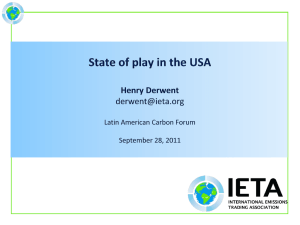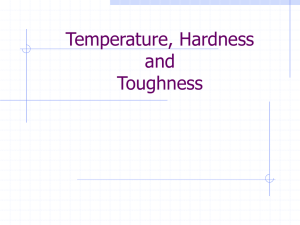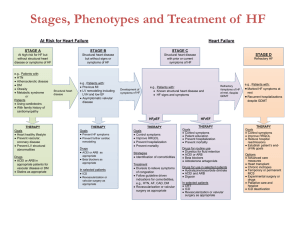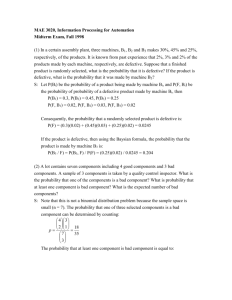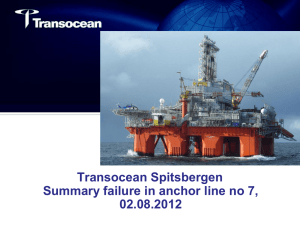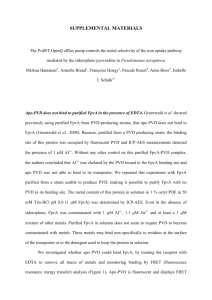CuNb-APL-SupplementaryMaterials-REV1
advertisement
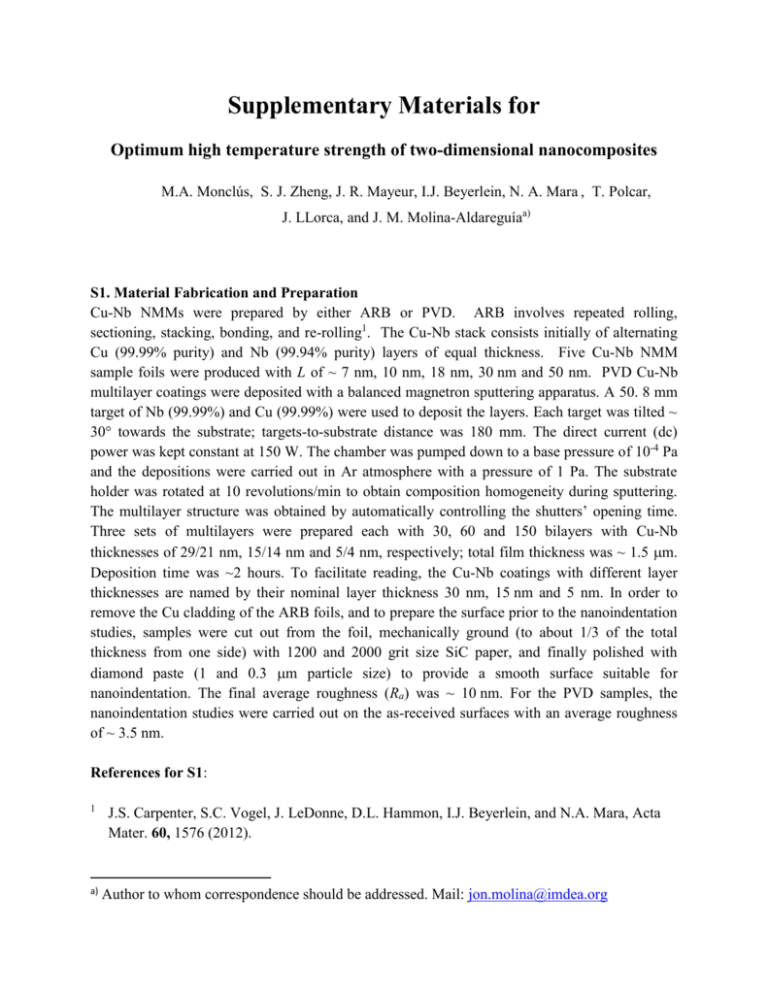
Supplementary Materials for
Optimum high temperature strength of two-dimensional nanocomposites
M.A. Monclús, S. J. Zheng, J. R. Mayeur, I.J. Beyerlein, N. A. Mara , T. Polcar,
J. LLorca, and J. M. Molina-Aldareguíaa)
S1. Material Fabrication and Preparation
Cu-Nb NMMs were prepared by either ARB or PVD. ARB involves repeated rolling,
sectioning, stacking, bonding, and re-rolling1. The Cu-Nb stack consists initially of alternating
Cu (99.99% purity) and Nb (99.94% purity) layers of equal thickness. Five Cu-Nb NMM
sample foils were produced with L of ~ 7 nm, 10 nm, 18 nm, 30 nm and 50 nm. PVD Cu-Nb
multilayer coatings were deposited with a balanced magnetron sputtering apparatus. A 50. 8 mm
target of Nb (99.99%) and Cu (99.99%) were used to deposit the layers. Each target was tilted ~
30° towards the substrate; targets-to-substrate distance was 180 mm. The direct current (dc)
power was kept constant at 150 W. The chamber was pumped down to a base pressure of 10-4 Pa
and the depositions were carried out in Ar atmosphere with a pressure of 1 Pa. The substrate
holder was rotated at 10 revolutions/min to obtain composition homogeneity during sputtering.
The multilayer structure was obtained by automatically controlling the shutters’ opening time.
Three sets of multilayers were prepared each with 30, 60 and 150 bilayers with Cu-Nb
thicknesses of 29/21 nm, 15/14 nm and 5/4 nm, respectively; total film thickness was ~ 1.5 m.
Deposition time was ~2 hours. To facilitate reading, the Cu-Nb coatings with different layer
thicknesses are named by their nominal layer thickness 30 nm, 15 nm and 5 nm. In order to
remove the Cu cladding of the ARB foils, and to prepare the surface prior to the nanoindentation
studies, samples were cut out from the foil, mechanically ground (to about 1/3 of the total
thickness from one side) with 1200 and 2000 grit size SiC paper, and finally polished with
diamond paste (1 and 0.3 m particle size) to provide a smooth surface suitable for
nanoindentation. The final average roughness (Ra) was ~ 10 nm. For the PVD samples, the
nanoindentation studies were carried out on the as-received surfaces with an average roughness
of ~ 3.5 nm.
References for S1:
1
a)
J.S. Carpenter, S.C. Vogel, J. LeDonne, D.L. Hammon, I.J. Beyerlein, and N.A. Mara, Acta
Mater. 60, 1576 (2012).
Author to whom correspondence should be addressed. Mail: jon.molina@imdea.org
S2. High temperature nanoindentation
Nanoindentation measurements were performed using a Nanotest Platform 3 Instrument
(Micromaterials, Wrexham, UK) fitted with a diamond Berkovich tip. For the ARB layers, the
indentation hardness and modulus were measured using a maximum load of 100 mN with 10 s
loading time and 5 s holding and unloading times, respectively. The maximum indent depth was
on the order of 1000 nm. For the PVD multilayers, the maximum load was set below 10 mN,
while the rest of the parameters were the same as those used for the ARB samples. This was
done to avoid substrate effects due to the thickness of the multilayer (1.5 m). By studying the
indentation response versus indentation depth it was determined that the best results were
obtained at indentations depths between 200 and 280 nm. Larger depths were affected by
substrate effects while smaller depths resulted in large scatter of the data due to roughness
effects. Consequently, all data reported was obtained at indentation depths of 250 nm.
High temperature nanoindentation tests at T = 300 °C and 400 °C were performed in an
environmental chamber, which was filled with Ar gas until a positive pressure was achieved
within the chamber with a final O2 level of ~ 0.1 %. The heating rate was ~ 1.6 °C/min and the
total testing time at the target temperature was ~ 2.5 hrs. Both sample and indenter tip were
heated independently to ensure thermal equilibrium conditions. The samples were mounted on a
hot stage using high-temperature cement (Omegabond 400). A thermocouple was placed on the
sample surface and used to match the temperature between the sample surface and the indenter
tip in order to minimize thermal drift effects.
To systematically investigate the effects of layer thickness and temperature, it is critical that the
layers do not coarsen while exposed to high temperatures. Both the ARB and PVD NMMs are
microstructurally stable up to 400 ºC1-3. The ARB samples were tested at temperatures up to 400
ºC, while the maximum temperature was 300 ºC for the PVD multilayers. The lower temperature
for the PVD multilayers was used to minimize the effects of surface oxidation despite the low O2
levels during testing.
Reported hardness values are an average of at least five indents. Atomic force microscopy
(AFM) analysis of the residual imprints was carried out using a Park XE150 AFM Instrument
(Park Systems Corp., Suwon, Korea). TEM (JEOL JEM 3000F) was performed on selected
indents by sectioning thin-lamellas using focused ion beam (FIB) (FEI Helios NanoLab 650)4.
References for S2:
1
2
A. Misra, R. G. Hoagland, H. Kung, Philos. Mag., 84, 1021 (2004).
S.J. Zheng, I.J. Beyerlein, J.S. Carpenter, K. Kang, J. Wang, W.Z. Han, and N.A. Mara,
Nature Communications, 4, 1696 (2013).
3
4
J.S. Carpenter, S.J. Zheng, R.F. Zhang, S.C. Vogel, I.J. Beyerlein, and N.A. Mara,
Philosophical Magazine, 93, 718 (2013).
J. M. Molina-Aldareguia, S. J. Lloyd, M. Oden, T. Joelsson, L. Hultman, W. J. Clegg, Phil.
Mag. A 82, 1983 (2002).
S3. Data supporting Figs. 1 and 2
Table S3.1. Hardness and yield stress for ARB and PVD Cu-Nb NMMs. Yield stress was
estimated as H/2.7. The last row in the case of ARB samples indicates the hardness, as computed
from the direct measurement of contact areas by AFM.
ARB multilayers
Layer thickness
[nm]
7
18
30
50
T=23 ºC
Hardness
(Yield stress)
[GPa]
T=300°C
Hardness
(Yield stress)
[GPa]
T=400°C
Hardness
(Yield stress)
[GPa]
4.9 0.1
(1.8)
4.5 0.1
(1.7)
3.6 0.1
(1.3)
3.3 0.1
(1.2)
2.9 0.1
(1.1)
3.3 0.2
(1.2)
2.4 0.2
(0.9)
2.1 0.1
(0.8)
1.8 0.1
(0.7)
2.6 0.2
(1.0)
1.9 0.2
(0.7)
1.7 0.1
(0.6)
AFM Hardness
[GPa]
2.1
2.6
2.1
1.8
PVD multilayers
Layer thickness
[nm]
5
15
30
T=23 ºC
Hardness
(Yield stress)
[GPa]
T=200°C
Hardness
(Yield stress)
[GPa]
T=300°C
Hardness
(Yield stress)
[GPa]
6.2 0.2
(2.3)
5.8 0.1
(2.15)
5.0 0.1
(1.9)
4.3 0.2
(1.6)
5.3 0.1
(2.0)
3.8 0.2
(1.4)
4.4 0.4
(1.6)
4.0 0.2
(1.5)
3.5 0.4
(1.30)
Figure S3.1. AFM images of the indents for: (a) PVD Cu-Nb NMMs, L = 5 nm at 23ºC; (b)
ARB Cu-Nb NMMs, L=7 nm, at 23ºC; (c) ARB Cu-Nb NMMs, L = 30 nm at 400ºC and (d)
ARB Cu-Nb NMMs, L = 30 nm at 400°C.
S4. Bicrystal crystal plasticity calculations at room and high temperature
We carried out crystal plasticity calculations of a Cu-Nb bicrystal deformed under compression
normal to the interface. Both crystals are finely meshed, wherein the deformation of each
material point is made to follow an anisotropic elastic and rate-dependent plastic constitutive
law. The slip kinetics are based on the notion thermally activated of dislocation glide1.
Temperature and strain rate are inputs and the remaining parameters for the dislocation slip
model have been characterized specifically for Cu and Nb2. The Cu crystal is only allowed to
deform on the {111}<110> slip systems. To fully capture the flow anisotropy of Nb, both
{110}<111> and {112}<111> slip are permitted3. Interface barrier effects and interfacial sliding
are not incorporated. Although the model is capable of accounting for these effects, our present
aim is to isolate crystallographic orientation effects. The remaining details of the theory and its
incorporation into the bicrystal model are given in Ref. 4.
In this work, we considered two bicrystals, one with the orientation relationship and interface
plane corresponding to a KS interface, characteristic of the PVD foils, and the other with those of
the predominant ARB interface, {112]<111>Cu||{112}<110>Nb. Generalized plane strain with
fully relaxed conditions for the two in-plane directions is applied to the bicrystal to represent the
deformation state applied in nanoindentation. Since the constitutive model is sensitive to strain
rate and temperature it is critical that the model captures the correct kinetics operating within the
deformation conditions of the test. In testing, the strain rate is estimated to be 0.1 s-1. In the
simulations, this value is used along with the prescribed temperatures. From the calculated
stress-strain response at each temperature, the stress after 8% strain is reported and converted
to a hardness estimate using H = 2.7.
References for S4:
1
Kocks, U.F., Mecking, H. Prog. Mater. Sci. 48, 171 (2003).
2
Hansen, B. L., Carpenter, J. S., Sintay, S. D., Bronkhorst, C. A., McCabe, R. J., Mayeur, J. R.,
Mourad, H. M., Beyerlein, I. J., Mara, N. A., Chen, S. R., Gray III, G. T. International Journal
of Plasticity, 49, In press.
3
Z. Q. Wang and I. J. Beyerlein, International Journal of Plasticity 27(10), 1471 (2011).
4
J. R. Mayeur, I. J. Beyerlein, C. A. Bronkhorst, H. M. Mourad, B. L. Hansen, International
Journal of Plasticity, 48, 72 (2013).
